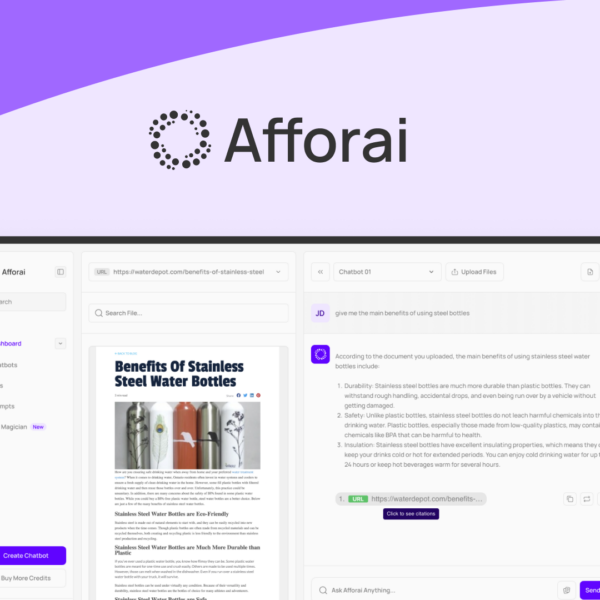The best sales software can transform your business by automating tasks, enhancing customer relationships, and providing valuable insights. Look for features like lead management, analytics, and integration capabilities to maximize revenue and streamline your sales processes.
In today’s competitive market, choosing the right sales software is essential for driving growth and efficiency. This article will guide you through the best options available.
Top Features to Look for in Sales Software
When evaluating sales software, it is crucial to know the top features that can enhance your sales strategies and improve productivity. Here are some vital features to consider:
User-Friendly Interface
The best sales software should have an intuitive and user-friendly interface. This helps your team to adopt the tool quickly, saving time on training and allowing sales representatives to focus on selling.
Lead Management Tools
A powerful lead management system is essential. This feature helps track and organize leads, ensuring that no opportunity slips through the cracks. Look for software that allows you to categorize leads based on engagement and potential.
Integration Capabilities
Sales software should integrate seamlessly with other tools you use, such as marketing automation, customer relationship management (CRM), and email platforms. This ensures a smooth flow of information across your tech stack.
Analytics and Reporting
Robust analytics and reporting capabilities are vital for understanding sales performance. Software that provides detailed insights can help you make data-driven decisions for optimizing your sales process.
Mobile Accessibility
In today’s fast-paced business environment, having access to sales tools on the go is essential. Ensure that the software offers mobile functionality, allowing your sales team to operate effectively from anywhere.
Comparing the Best Sales Software Options

When it comes to choosing the best sales software, it’s important to compare your options thoroughly. Different software solutions come with unique features and pricing structures that cater to various business needs.
Criterias for Comparison
Start by defining the criteria that are most important for your business, such as:
- Pricing models: monthly subscription or one-time payment
- User limits: how many team members can use the software
- Customer support: availability of support channels
- Customization options: ability to tailor the software to fit your needs
Top Contenders in Sales Software
Here are some of the leading sales software options available:
- Salesforce: Known for its comprehensive CRM capabilities, Salesforce is ideal for larger teams with varying needs.
- HubSpot Sales: Great for inbound sales efforts, HubSpot provides integration with other marketing tools and offers a free version.
- Pipedrive: This tool is recognized for its visual sales pipeline and is user-friendly for smaller teams.
- Zoho CRM: Affordable and feature-rich, it suits small to medium-sized businesses looking for flexibility.
- Freshsales: Offers AI-based features for sales forecasting and is easy to implement.
Making Your Choice
To make the best decision, consider piloting a few options. Many software providers offer free trials or demos, allowing you to assess service efficiency and suitability before committing long-term.
User Reviews and Testimonials
Don’t forget to check user reviews and testimonials. Real-world experiences can shed light on potential pitfalls and highlight the best features of the software.
How Sales Software Can Increase Your Revenue
Using sales software can significantly increase your revenue by streamlining processes, enhancing customer relationships, and improving operational efficiency. Here’s how:
Automation of Tasks
Sales software automates routine tasks like data entry and follow-ups. This automation allows your sales team to focus more on selling and less on administrative work, ultimately boosting productivity and sales.
Better Lead Tracking
With advanced lead tracking features, sales software helps you keep track of potential customers throughout the sales funnel. This visibility allows for targeted outreach, leading to higher conversion rates and increased sales.
Improved Customer Relationship Management
Sales software often includes CRM functionalities, enabling you to manage customer information and interactions effectively. By personalizing communication and developing stronger relationships, businesses can increase customer loyalty and repeat sales.
Data-Driven Insights
Sales software provides valuable analytics and reporting tools. These insights help identify successful strategies, track team performance, and understand customer behavior, allowing you to make informed decisions that drive revenue growth.
Enhanced Collaboration
Many sales software solutions enable collaboration among team members. Features like shared dashboards and real-time updates foster communication and teamwork, leading to a more efficient sales process.
Tips for Implementing Sales Software Effectively

Implementing sales software effectively can maximize its benefits for your team. Here are key tips to ensure a smooth transition:
1. Assess Your Needs
Before choosing a sales software solution, evaluate your team’s specific needs. Identify the features that are most important for your business, such as lead management, automation, or reporting capabilities.
2. Involve Your Team
Involve your sales team in the selection process. Collect their feedback on what they need from the software. When team members feel included, they are more likely to embrace the new tool.
3. Provide Comprehensive Training
Offer thorough training sessions to your team. A well-trained team will be more confident and capable when using the software, leading to quicker adoption and fewer mistakes.
4. Start with a Pilot Program
Consider starting with a pilot program to test the software. Choose a small group to use the software initially, gather their feedback, and make any necessary adjustments before a full rollout.
5. Monitor and Adjust
After implementation, continuously monitor the performance and effectiveness of the software. Be open to making adjustments based on user feedback and changing business needs. Regularly reviewing usage can help you optimize its capabilities.
Future Trends in Sales Software
The landscape of sales software is continuously evolving. Staying informed about future trends can help businesses adapt and remain competitive. Here are some anticipated trends in sales software:
1. Integration with Artificial Intelligence
AI is set to play a significant role in sales software. AI-driven features such as predictive analytics, automated lead scoring, and personalized customer interactions will become more common, helping teams work smarter and more efficiently.
2. Increased Mobile Functionality
As remote work becomes more prevalent, sales software is focusing on mobile capabilities. This trend allows sales teams to access essential tools and data on the go, enhancing flexibility and responsiveness.
3. Enhanced Data Security
With the growing concern around data privacy, future sales software will prioritize security measures. Solutions will implement stronger encryption protocols and compliance with data protection regulations to safeguard customer information.
4. Emphasis on User Experience
Sales software developers are increasingly focusing on user experience. Intuitive interfaces and user-friendly designs will be vital in ensuring that teams can maximize the software’s potential without extensive training.
5. Social Selling Features
Integrating social media with sales software will become more prevalent. Features that allow for social selling, such as social listening tools and direct outreach through social platforms, will help sales teams engage with customers where they spend their time.
In Summary: Embracing Sales Software for Success
Implementing effective sales software can greatly enhance your business operations. From automating tasks to improving customer relationships, the right tools can drive significant growth.
By being aware of the latest trends and focusing on user needs, businesses can choose the best solutions for their teams. Additionally, proper training and integration will ensure a smooth transition.
As the sales landscape continues to evolve, staying informed and adaptable will help your business thrive in a competitive market. Embrace these technologies to maximize your potential and increase your revenue.
FAQ – Frequently Asked Questions about Sales Software
How can sales software increase my business revenue?
Sales software can boost revenue by automating tasks, improving lead tracking, enhancing customer relationships, and providing valuable data insights.
What features should I look for in sales software?
Look for features like user-friendly interfaces, lead management tools, integration capabilities, analytics and reporting, and mobile accessibility.
How can my team get the most out of new sales software?
Involve your team in the selection process, provide thorough training, and encourage feedback to ensure a smooth implementation.
What are some common challenges when implementing sales software?
Common challenges include resistance to change, lack of training, and inadequate integration with existing tools. Addressing these issues upfront can help.
How do I choose the right sales software for my business?
Assess your specific needs, compare different options based on features and pricing, and consider testing software with a pilot program.
What are the future trends in sales software I should watch for?
Future trends include increased AI integration, enhanced mobile functionality, better data security, improved user experience, and social selling features.




